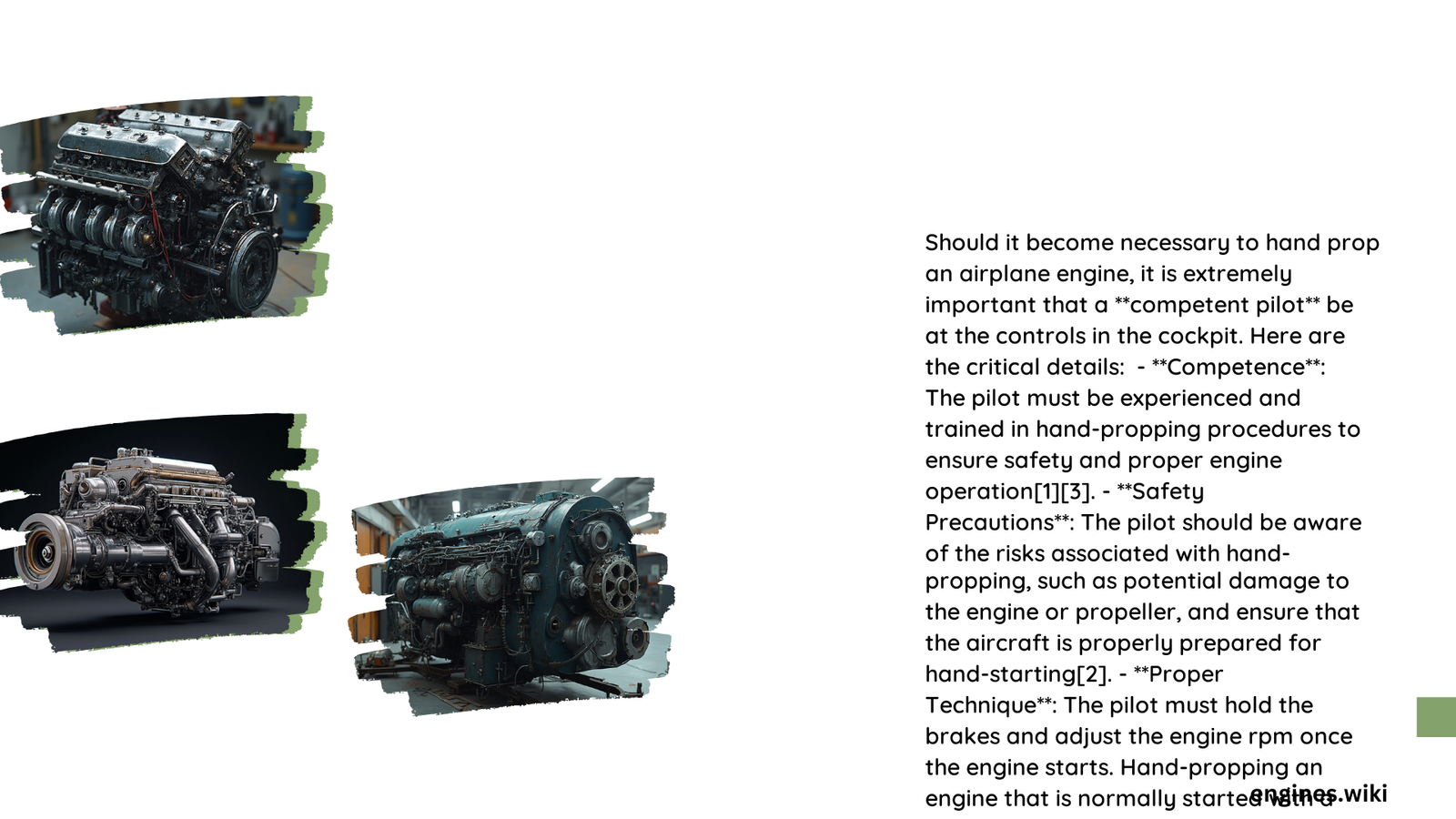Hand propping an airplane engine represents a critical emergency skill for pilots and aircraft mechanics when electrical starting systems malfunction. This specialized technique involves manually rotating an aircraft’s propeller to start the engine, requiring precise knowledge, careful execution, and comprehensive understanding of potential risks and safety protocols. Pilots and aviation professionals must master this technique to ensure operational readiness in challenging scenarios where conventional starting methods become unavailable.
Why Would You Need to Hand Prop an Aircraft Engine?
What Are the Primary Reasons for Manual Engine Starting?
Aircraft may require hand propping in several critical scenarios:
- Electrical System Failure
- Battery depletion
- Starter motor malfunction
-
Electrical system breakdown
-
Vintage Aircraft Limitations
- Older aircraft without electric starters
- Preserved historical aircraft
-
Experimental or custom-built planes
-
Remote Location Challenges
- Limited maintenance resources
- Absence of external power sources
- Emergency field operations
What Safety Precautions Must Be Followed?

How Can You Minimize Risks During Hand Propping?
| Safety Aspect | Recommended Action | Potential Consequence if Ignored |
|---|---|---|
| Personal Protection | Wear fitted clothing | Risk of fabric catching in propeller |
| Communication | Clear verbal commands | Potential unexpected engine start |
| Physical Positioning | Maintain safe distance | Potential serious injury |
| Equipment Check | Verify brake engagement | Uncontrolled aircraft movement |
What Are Critical Pre-Start Checks?
Before attempting hand propping, perform these essential checks:
- Confirm aircraft is securely chocked
- Verify brakes are fully engaged
- Ensure no personnel near propeller arc
- Check fuel system configuration
- Validate ignition switch position
How to Perform Hand Propping Correctly?
What Techniques Ensure Successful Engine Start?
Proper Stance and Grip
- Position yourself approximately one foot from propeller
- Use open-hand grip technique
- Keep body balanced and ready to move
- Wear protective gloves
Communication Protocol
- Establish clear verbal commands
- Confirm cockpit readiness
- Use standardized starting sequence
- Maintain constant awareness
What Technical Considerations Impact Hand Propping?
How Do Engine Characteristics Affect the Process?
Different aircraft engines present unique challenges:
- Compression Ratio: Higher compression requires more careful technique
- Magneto Configuration: Dual vs. single magneto systems
- Propeller Blade Design: Impact rotation characteristics
- Environmental Conditions: Temperature and altitude variations
What Advanced Skills Are Required?
Can Anyone Learn Hand Propping?
Professional training is strongly recommended:
– Seek certified aviation instructor guidance
– Practice under supervised conditions
– Understand specific aircraft engine requirements
– Develop muscle memory and situational awareness
Potential Risks and Mitigation Strategies
How Can Accidents Be Prevented?
- Never wrap fingers around propeller blade
- Maintain constant situational awareness
- Use standardized safety protocols
- Practice emergency disengagement techniques
Conclusion
Hand propping remains a specialized skill requiring extensive training, precise technique, and unwavering attention to safety protocols. While modern aircraft increasingly rely on electric starting systems, understanding this traditional method can prove crucial in emergency scenarios.
